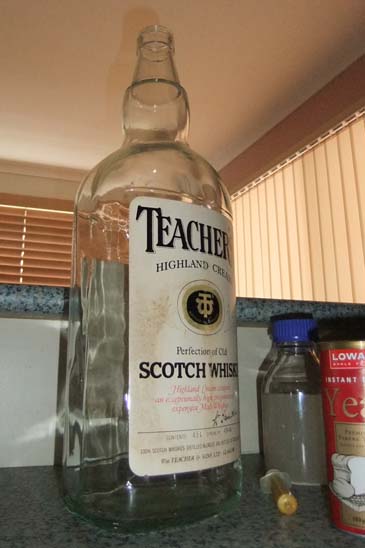pdilley
Well-Known Member
- Joined
- 1/3/09
- Messages
- 1,393
- Reaction score
- 31
citymorgue2,
Do you have your starting gravity handy?
1060 is a high finish but JAO is normally a high finish in the 36-42 point ranges usually so you are not far off. Just would like to shed 20 more points. If you have been tracking the ferment and hit a brick wall with the yeast check the pH as with moovets mead if your yeast is performing fine but all of a sudden hits a wall before normal tolerance levels it's usually a dip below 3.5, and a buffer that precipitates out readily is called for. You can pitch more yeast or even build up a nice starter but if it hits low pH it will pfaff out on you the same.
If you know volumetric additions you can pull off a sample amount and add some water to bring it down in gravity and have a taste test. If too much water is required you'll end up diluting flavour as well so better to see what state your ferment is in and see if you can adjust it to make it pull down on it's own.
Cheers,
Brewer Pete
Do you have your starting gravity handy?
1060 is a high finish but JAO is normally a high finish in the 36-42 point ranges usually so you are not far off. Just would like to shed 20 more points. If you have been tracking the ferment and hit a brick wall with the yeast check the pH as with moovets mead if your yeast is performing fine but all of a sudden hits a wall before normal tolerance levels it's usually a dip below 3.5, and a buffer that precipitates out readily is called for. You can pitch more yeast or even build up a nice starter but if it hits low pH it will pfaff out on you the same.
If you know volumetric additions you can pull off a sample amount and add some water to bring it down in gravity and have a taste test. If too much water is required you'll end up diluting flavour as well so better to see what state your ferment is in and see if you can adjust it to make it pull down on it's own.
Cheers,
Brewer Pete






